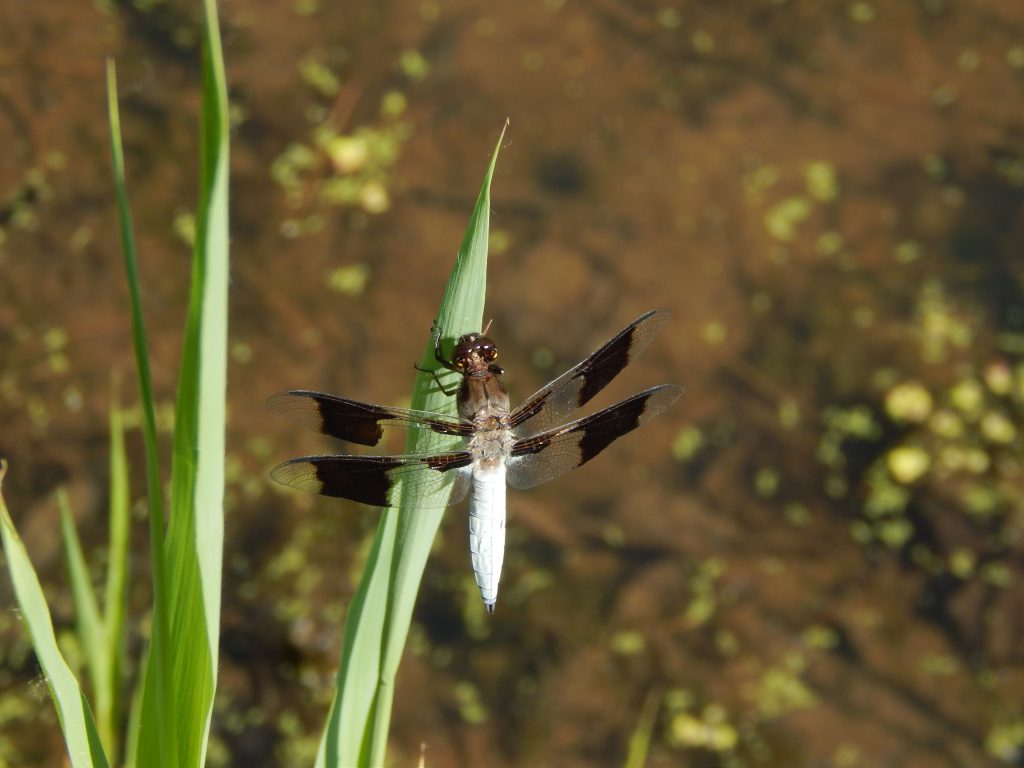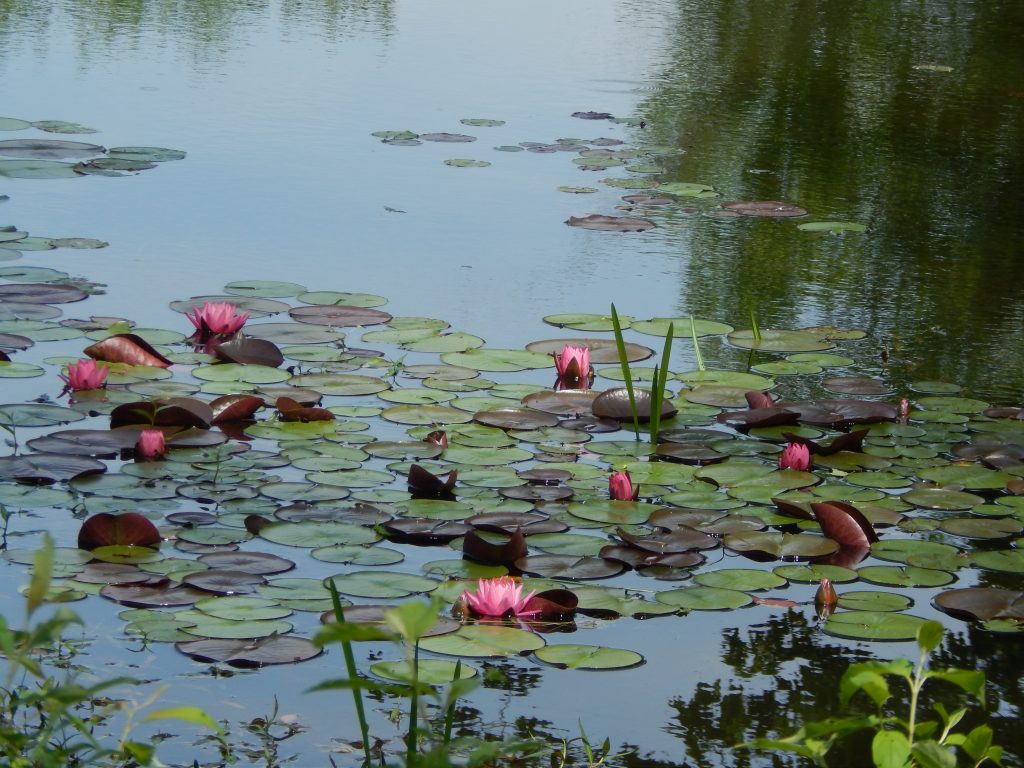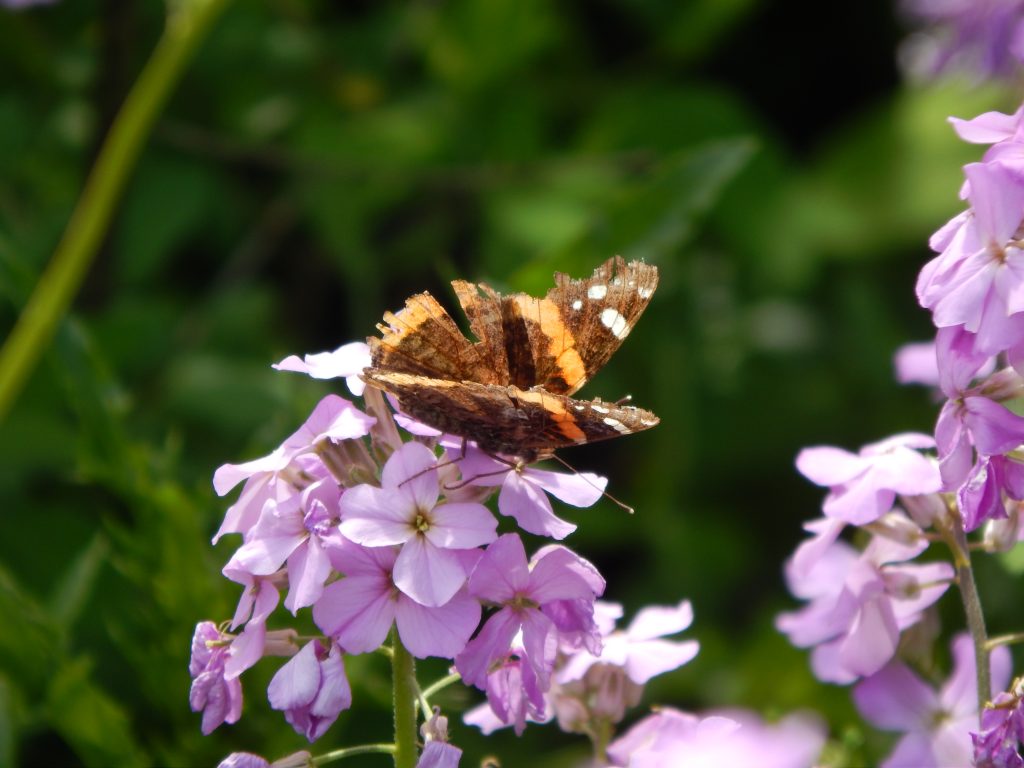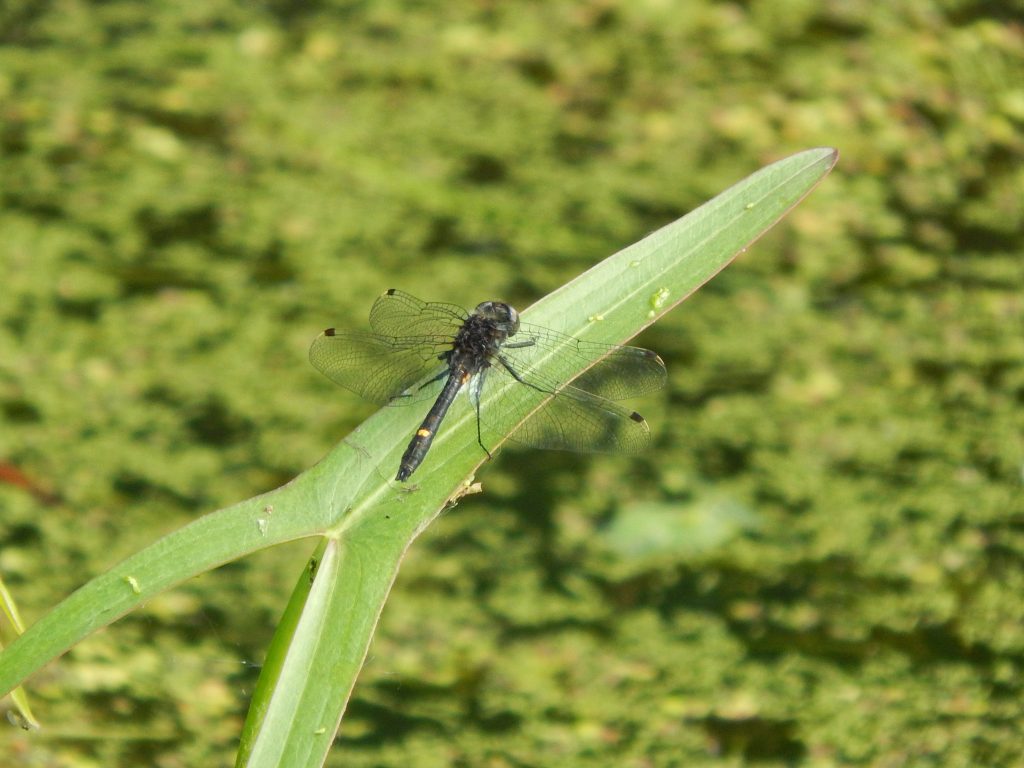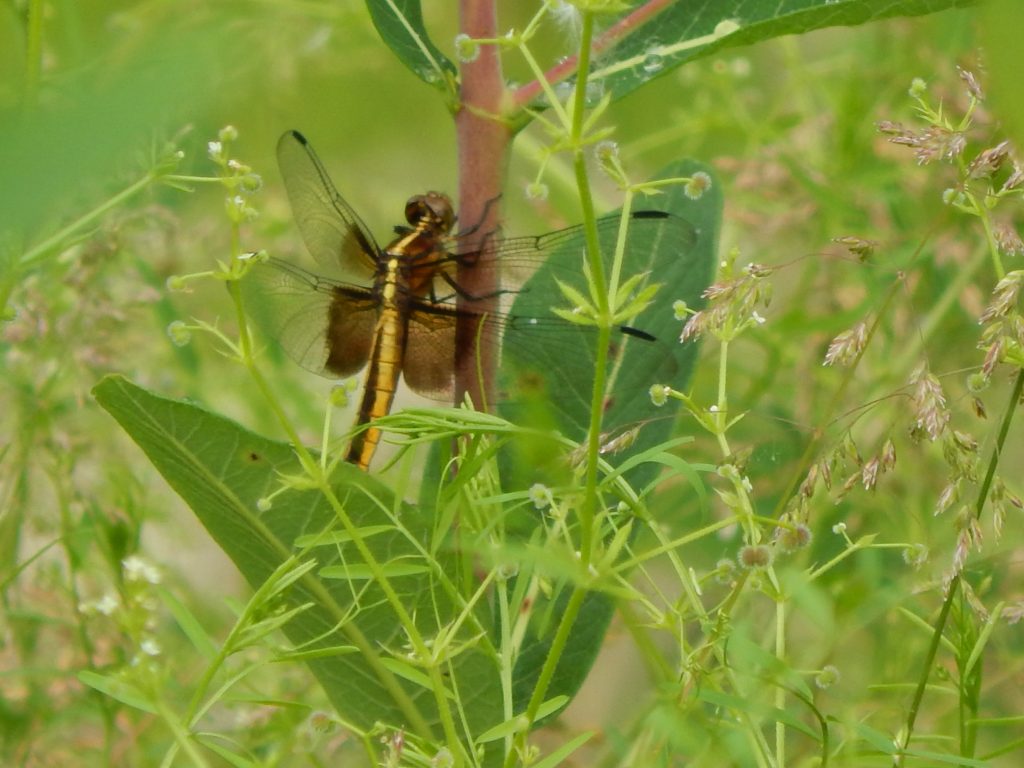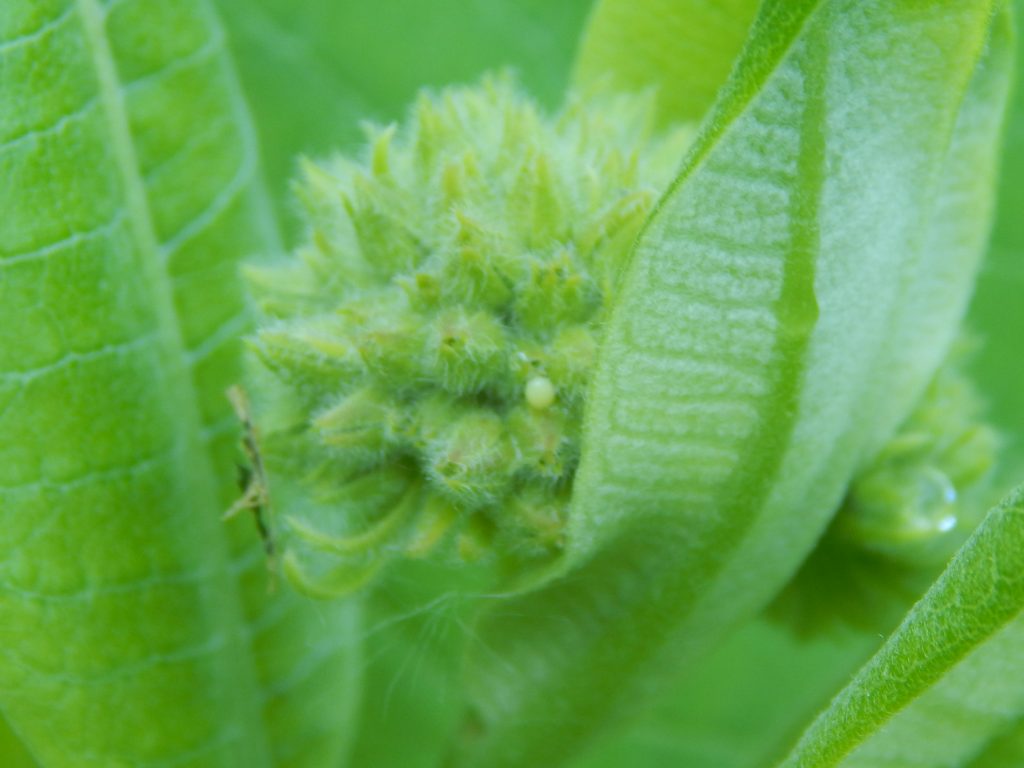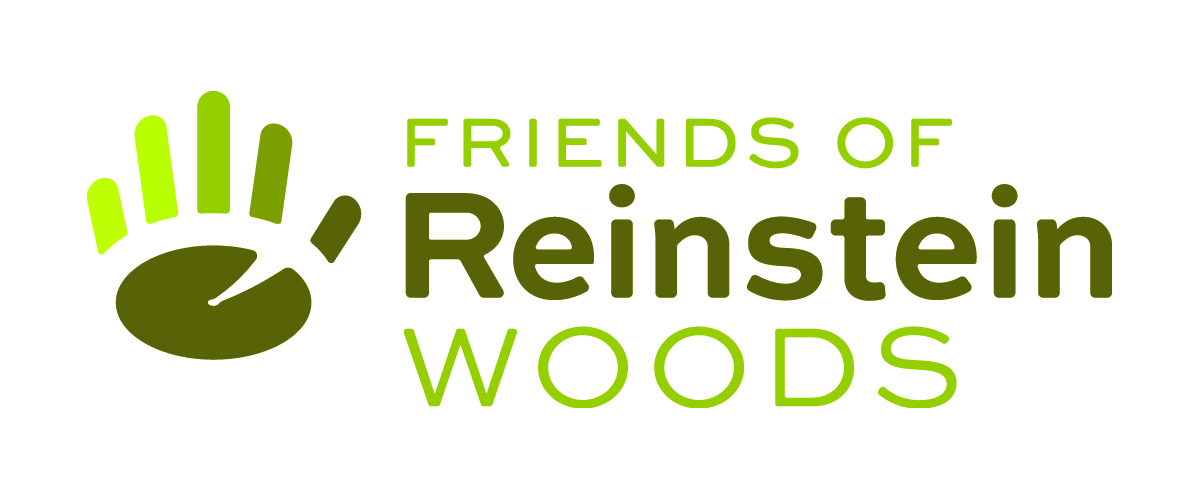All posts by Reinstein Woods
Dragonflies of Western NY during June
Dragonflies are an insect with two pairs of wings and three pairs of legs. Many species have large compound eyes that cover most of their head. They also have very small antenna. These insects are harmless and won’t bite or sting. At rest dragonfly wings are usually off to their sides, while damselflies, a close cousin, holds their wings over their back or abdomen. Dragonflies bodies are stout compared to slender damselflies. Some species like green darner will migrate while others spend most of the year in ponds or streams as nymphs emerging as an adult during summer. Dragonfly nymphs usually emerge from the water while it’s still dark to inflate and dry their wings. They are very vulnerable at this stage, so they come out before birds are active. Each species has unique color patterns and behaviors that help you to identify them. Many male dragonflies will patrol their section of a pond and will actively chase away intruding males. They choose a territory that is ideal egg laying habitat for their mate. Some like areas with emergent vegetation like cattails, others like floating vegetation like water lilies and some prefer submerged vegetation. Hawking is a behavior where the dragonfly perches on a stick or branch and quickly swoops up to grasp an unsuspecting insect for lunch. They usually will return to rest on the same perch to munch on their prey. Dragonflies feed mostly on flying insects, even mosquitoes. Adult dragonflies may fall prey to larger dragonflies, fish, birds, and also frogs. June and July are the best months to enjoy Dragonflies in Western New York.
Created by Mike Adriaansen
Nature Sightings
As summer approaches, cottonwood seeds begin to float through the air. Flowering Dame’s rockets attract many pollinators such as hummingbird clear wing moths, red admiral and tiger swallowtail butterflies. You will also find a variety of bee visitors. Dragonflies are emerging from the ponds and will increase in numbers through July. The vibrant common whitetail cruise along the pond edges coming to rest on a stick protruding from the water. Ash trees, black locust, and wild grape vines are flowering. The “Gunk” calls of green frogs fill the air with an occasional jug o rum call of the bullfrogs. The melodic whistle of the Baltimore oriole is a frequent sound around the trails. Look for their hanging woven nests above the trails. Great blue heron wade through the water lilies (in full bloom), stealthily spearing unsuspecting fish. Sunfish and blue gills hover over their gravel nests fanning it with their fins. Black swallowtail butterflies may be seen laying their eggs on wild carrot leaves. Keep an eye out for snapping turtles laying their eggs in early morning. They will sometimes travel a fair distance to find a suitable place to lay their eggs. With Monarch butterflies returning, look for them to be laying eggs on common milkweed plants.
Goats Eat Invasives
Goats recently visited Reinstein Woods to help control an invasive plant. Reinstein Intern Nick Morelli prepared this video to explain why our furry friends were needed, and chatted with the goat’s owners to learn more. Click on the picture to view Goat Video.

Nature Is For Everyone: A Statement from Reinstein Woods on Access and Inclusion
Attract Orioles with Oranges
Baltimore Orioles (Icterus galbula) are an average sized songbird with a thick neck and long legs. Males are a brilliant orange and black with a white wingbar. They won’t get their bright colors until their second year. Females color is variable with a brownish to yellowish head and back and yellow tail. They have a long sharp pointed beak like other members of the blackbird family. Each Spring, Baltimore Orioles migrate north from Central America. They usually return to Western NY around the end of April and early May. Baltimore Orioles enjoy ripe fruit, nectar and insects. They also eat many pest species of insects such as tent caterpillars. Some people leave out orange slices or grape jelly to attract them to their backyard during their migration. They are common in open woodlands, forest edges, and along riverbanks. They build a remarkable hanging nest using the fibrous outer bark of plants in the milkweed family, grasses and grapevines. They frequently nest in maple and cottonwood trees. Their nest placement is generally high in a tree. Listen for the Baltimore Orioles Whistling flute-like song.
Created by Mike Adriaansen
White-Crowned Sparrow Natural History
White-Crowned sparrows are a large, long-tailed sparrow. They have a gray face and breast. They are most easily recognized by their Bold black and white head pattern. Both the male and female have a similar appearance. White-crowned sparrows migrate through New York in early Spring to their breeding range in Northern Canada. While feeding they will hop across the ground and often use a “double scratching” technique to expose hidden seeds on the ground. Their songs will vary in different parts of the country. Keep an eye out for these striking little sparrows as they pass through each spring.
Created by Mike Adriaansen
Mike Adriaansen Presented with Partnership Award
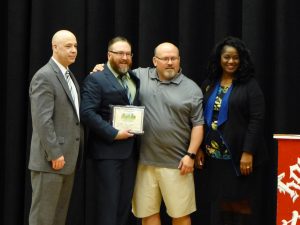
Reinstein Woods Environmental Educator Assistant Mike Adriaansen received a partnership award this spring from Houghton Academy, a Buffalo Public School.
Mike has been working with Houghton students since he started with DEC more than 12 years ago. He has helped 128 students from the school attend Camp Rushford. Students have the opportunity to canoe, fish, swim, and learn wilderness skills during their time at camp.
Mike coordinates the campership program and works with the students throughout the year to familiarize them with fellow campers and the outdoors. Mike organizes activities such as planting native seedlings, hiking at Reinstein Woods, and snowshoeing in the months leading up to camp.
It is clear that Mike has had a positive impact on this program. When his name was called for the award, you could hear the excited cheers of many current and past campers! Some of the students Mike has worked with have returned to camp and gone on to become counselors. Mike continues to encourage students to get involved and attend Camp Rushford. He is a champion of connecting kids to nature!
The campership program is supported by Friends of Reinstein Woods. The Friends group pays to transport kids to camp and funds supplies, food, and entrance fees for camper activities throughout the year. We are so honored to have Mike Adriaansen as a part of the team here at Reinstein Woods!
Congratulations to Mike for a well-deserved award!
Reinstein Woods Helps Western New York Students Make Connections Globally
Last year, Reinstein Woods received a federal grant from the National Oceanic and Atmospheric Administration to expand the Day in the Life of the Buffalo River program to include the larger Niagara River/Lake Erie Watershed. The grant allowed us to provide extensive teacher training, classroom learning, and meaningful watershed education experiences for students.
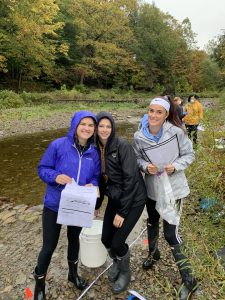
The expanded program uses Global Learning and Observations to Benefit the Environment (GLOBE) protocols, a set of standardized water quality measurement protocols that allow educators and students to connect with others and compare data across the world.
The Holland High School 12th graders have done just that! They collected water quality data and prepared a report comparing the water quality in Western New York to water data collected by peers in Kenya. They plan to present their findings at a science symposium.
Other students got creative in educating others about water quality issues. Students from Stella Niagara, led by teachers Margaret Feuerman and former Reinstein intern Julia Kostin, created public service announcements and “wanted” posters to alert their community to the threat of invasive species in the Niagara River.
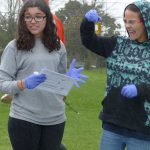
And after collecting water quality data from nearby Gill Creek, Niagara Falls High School students created video and print public service announcements warning of the dangers of water pollution.
Environmental Education Interns Adjust to Changing Environment
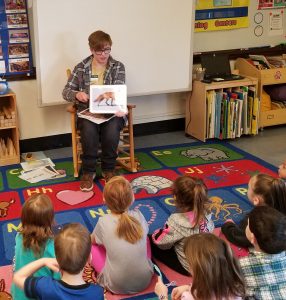
Each year, Reinstein Woods excitedly offers individuals a 3 to 8 month opportunity to gain skills in environmental education. Typically, interns participate in training workshops, lead tours, help facilitate summer camp, and expand their knowledge of the natural environment at Reinstein Woods and beyond.
With the unprecedented changes this year, the intern experience has a different intensity. Intern Theo Berenson has focused on developing his skills as a naturalist by taking frequent hikes to work on plant and animal identification.
Theo also has been researching some projects for Reinstein Woods when we are able to return. Theo is drafting a Zero Waste Policy for Reinstein Woods as well as working on developing a “Sensory Walk” for Reinstein Woods visitors who have autism.
Intern Nick Morelli’s “COVID contributions” to education at Reinstein Woods include a “mindfulness walk”- a series of prompts for visitors to the Lily Pond Loop Trail, a new “EcoTinker” backpack for children to borrow once the education center reopens, and a “Bucket List” of Reinstein Woods activities for visitors to achieve over their lifetime!
He’s also presenting a virtual workshop on nature art to Reinstein Woods’ volunteers.
“I’ve learned that adapting to scenarios to meet the needs and accessibility of the public is one of the biggest priorities in wildlife education,” said Nick. “It’s not always what you teach, it’s how you teach it.”
Invasive Species Control Project Moves Forward
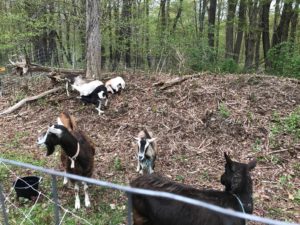 Around the time that you receive this newsletter, some furry friends will be munching away at invasive Japanese knotweed plants on one of Reinstein Woods’ trails. Retired milking goats from Let’s Goat Buffalo will spend two weeks eating this plant, which grows in dense stands and crowds out native plants preferred by wildlife. During the day, the goats will graze inside an electrified fence. Their activity may result in some trail closures; please respect the “no trespassing” signs if you visit during this time. And watch for videos about their progress on our website and social media. While the goats will not eradicate the knotweed completely, their activity is a non-chemical way to limit the spread of this plant.
Around the time that you receive this newsletter, some furry friends will be munching away at invasive Japanese knotweed plants on one of Reinstein Woods’ trails. Retired milking goats from Let’s Goat Buffalo will spend two weeks eating this plant, which grows in dense stands and crowds out native plants preferred by wildlife. During the day, the goats will graze inside an electrified fence. Their activity may result in some trail closures; please respect the “no trespassing” signs if you visit during this time. And watch for videos about their progress on our website and social media. While the goats will not eradicate the knotweed completely, their activity is a non-chemical way to limit the spread of this plant.
Funding for this program is provided by Friends of Reinstein Woods.

